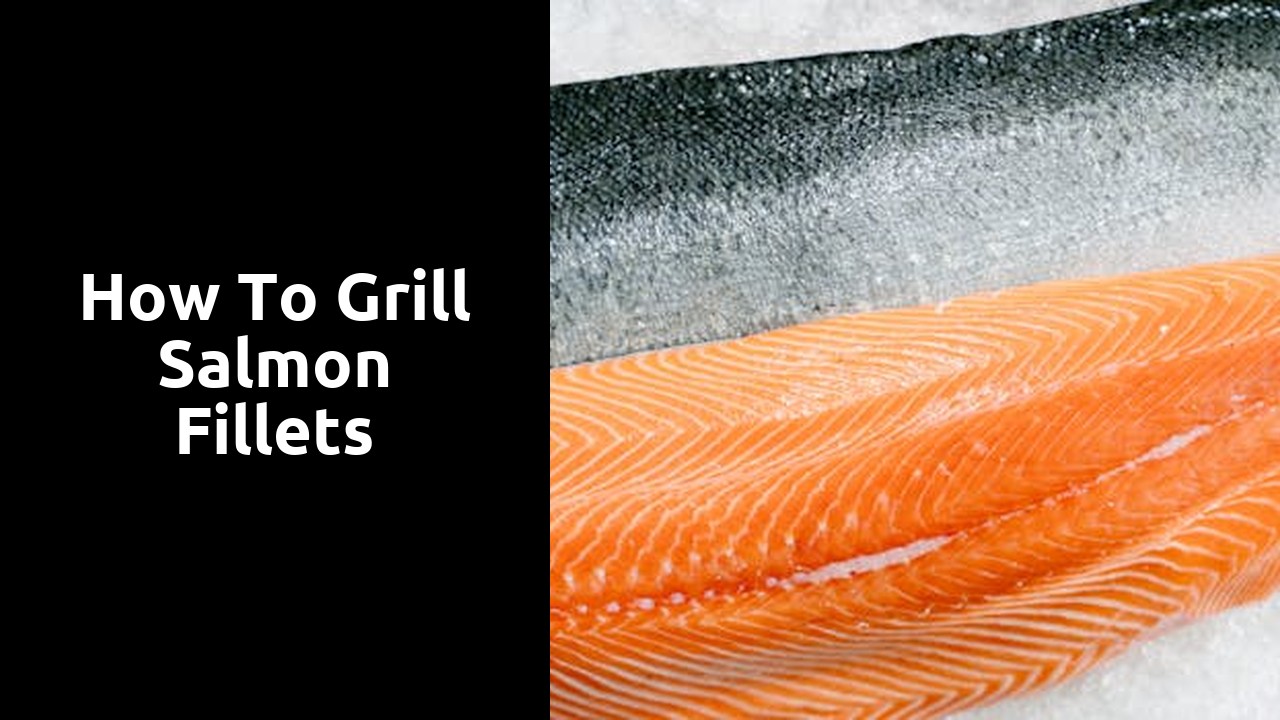How to Grill Salmon Fillets

Checking for Doneness
To ensure your salmon fillets are perfectly cooked, look for signs of doneness that indicate they are ready to be taken off the grill. The flesh should be opaque and easily flaked with a fork when gently pressed. Overcooked salmon will appear dry and flaky, so it's crucial to pay close attention to the texture and avoid leaving it on the grill for too long.
Another way to check for doneness is to use a meat thermometer inserted into the thickest part of the fillet. The internal temperature should reach 145°F (63°C) to ensure that the fish is safe to eat. By mastering these simple techniques, you can confidently grill salmon fillets to perfection every time.
Ensuring Proper Cooking
An essential aspect of grilling salmon fillets is ensuring they are cooked properly. The key to perfectly cooked salmon is to grill it until the fish is opaque and easily flakes with a fork. Remember not to overcook the salmon as it can result in a dry texture, which compromises the delicate flavour of the fish. It's crucial to monitor the cooking time closely to achieve that ideal balance - tender, moist, and bursting with flavour.
When grilling salmon fillets, maintaining a consistent medium heat is vital. A medium heat ensures that the fish cooks through evenly without burning the exterior or leaving the centre undercooked. Additionally, brushing the fillets with a thin layer of oil before grilling helps prevent sticking and aids in achieving that appealing golden crust. By following these simple steps and staying attentive to the grilling process, you'll savour tender, succulent salmon fillets each time you cook them on the barbecue.
Serving Suggestions
Salmon fillets, when perfectly grilled, are a delight for the taste buds. Once your salmon is done cooking, consider serving it with a squeeze of fresh lemon juice to enhance the flavours. This simple addition adds a zesty kick that complements the rich taste of the fish beautifully. Additionally, a scattering of chopped fresh herbs like dill or parsley on top of the salmon can elevate its presentation and provide a burst of freshness.
To complete your grilled salmon meal, pair the fillets with a side of roasted vegetables or a crisp green salad. The grilled fish's tender texture pairs wonderfully with the crunch of roasted broccoli or the juiciness of tomatoes in a salad. These sides not only add vibrant colours to your plate but also provide a nutritious balance to your meal. Remember, simplicity is key when serving grilled salmon - let the natural flavours shine through without overpowering them with heavy sauces or seasonings.
Pairing with Sides
When serving grilled salmon fillets, the choice of sides can greatly enhance the dining experience. A fresh mixed green salad with a light vinaigrette dressing can complement the rich flavours of the salmon beautifully. The acidity of the dressing helps cut through the richness of the fish, creating a harmonious balance of flavours on the palate.
For a heartier option, roasted or grilled vegetables make an excellent pairing with grilled salmon. Opt for seasonal vegetables such as asparagus, zucchini, and bell peppers, seasoned with herbs like thyme or rosemary. The smoky char from the grill adds depth to the vegetables, while their natural sweetness enhances the savoury notes of the salmon. This combination makes for a wholesome and delicious meal that is sure to impress your guests.
Storing Leftover Salmon
Once you've enjoyed your delicious grilled salmon fillets, it's essential to store any leftovers correctly to maintain their freshness and flavour. To store cooked salmon, allow it to cool completely before transferring it to an airtight container or wrapping it tightly in cling film. Ensure that the salmon is not left at room temperature for more than two hours, refrigerating it promptly to prevent bacterial growth.
When storing leftover grilled salmon in the refrigerator, place it on the shallowest shelf towards the back, where the temperature remains the most consistent. Cooked salmon can be stored in the fridge for up to three days, but it's best to consume it within one to two days for optimal taste and texture. To reheat the salmon, gently warm it in the oven at a low temperature or in a pan with a splash of water to prevent it from drying out.
Maintaining Freshness
To uphold the freshness of your leftover salmon, it is crucial to store it properly. Once the salmon has cooled down to room temperature after grilling, wrap it tightly in cling film or transfer it to an airtight container. Place it in the refrigerator as soon as possible to prevent the growth of bacteria. Proper storage will also help maintain the flavour and texture of the salmon for longer.
When storing cooked salmon, ensure it is consumed within 2 to 3 days to avoid any risk of spoilage. If you plan to keep it for longer, consider freezing it instead. Wrap the salmon tightly in aluminium foil or place it in a freezer-safe container before freezing. When ready to eat, defrost the salmon in the refrigerator overnight and reheat it gently to retain its juiciness. By following these storage guidelines, you can enjoy delicious grilled salmon for a second meal without compromising on taste or safety.
Related Links
What to Do When Poaching Salmon FilletsWhat to Consider When Pan-frying Salmon Fillets
The History of Grilling Salmon Fillets
A Roundup of the Best Poaching Techniques for Salmon Fillets
Top 10 Recipes for Baking Salmon Fillets